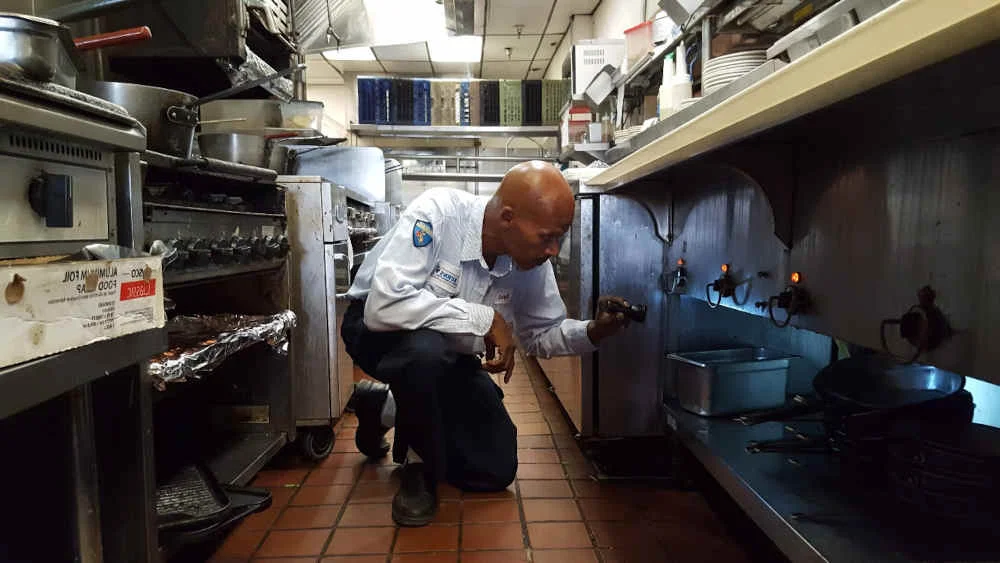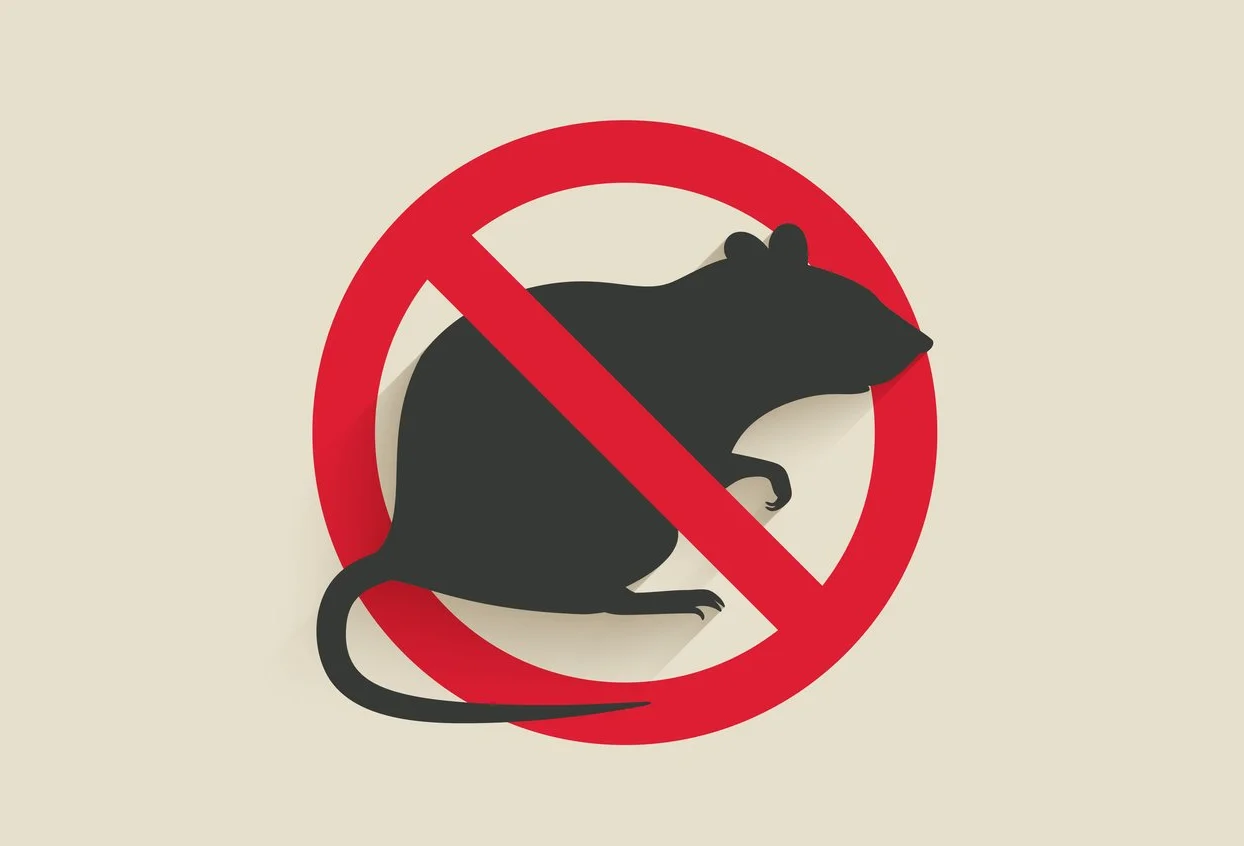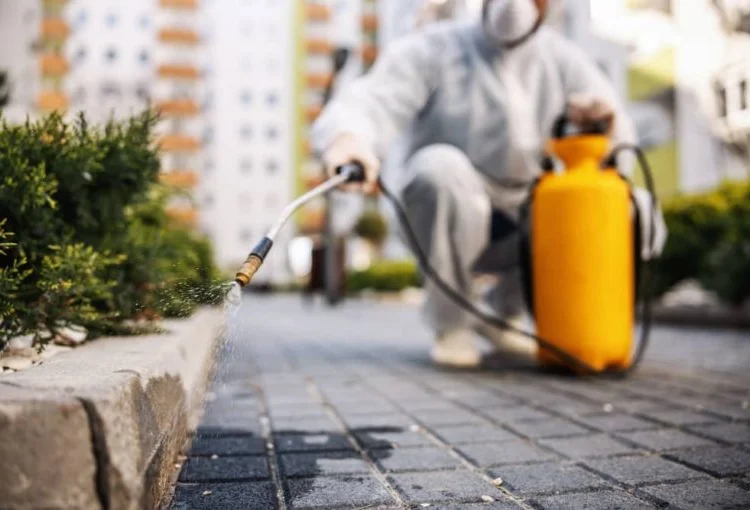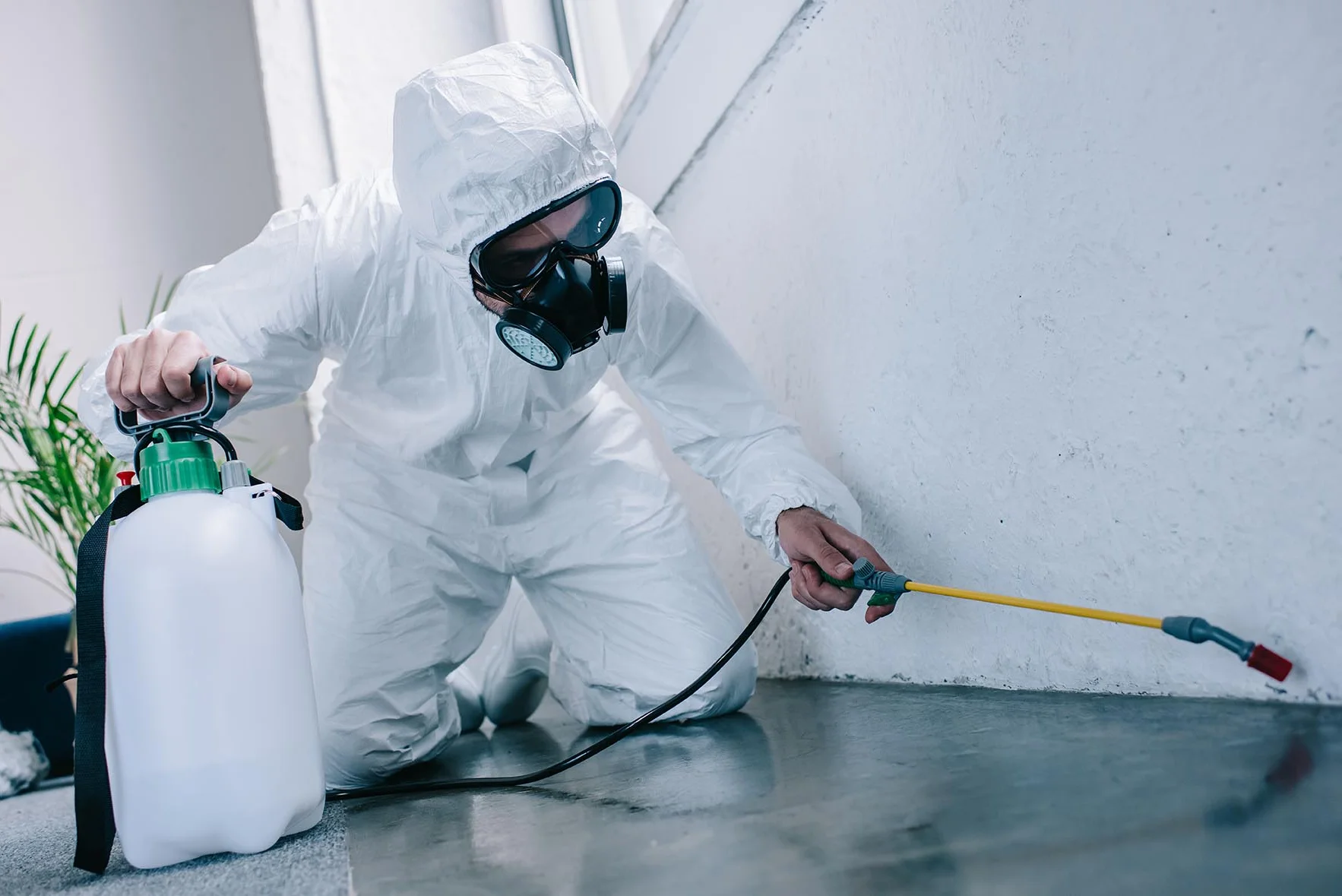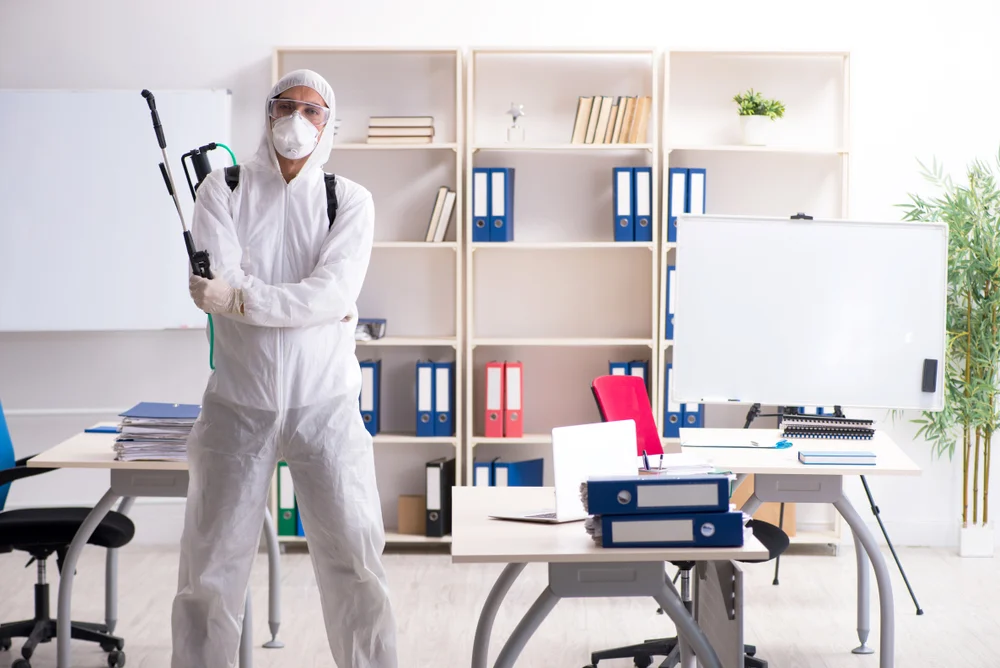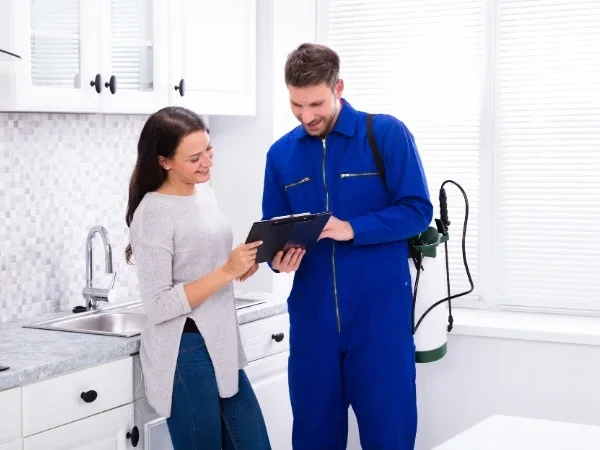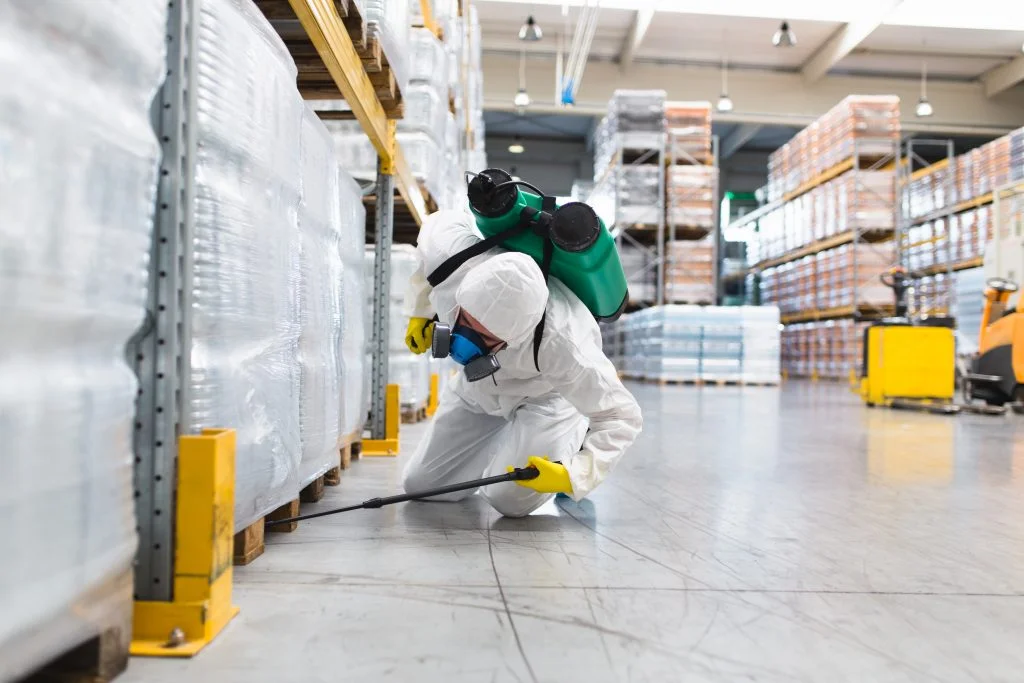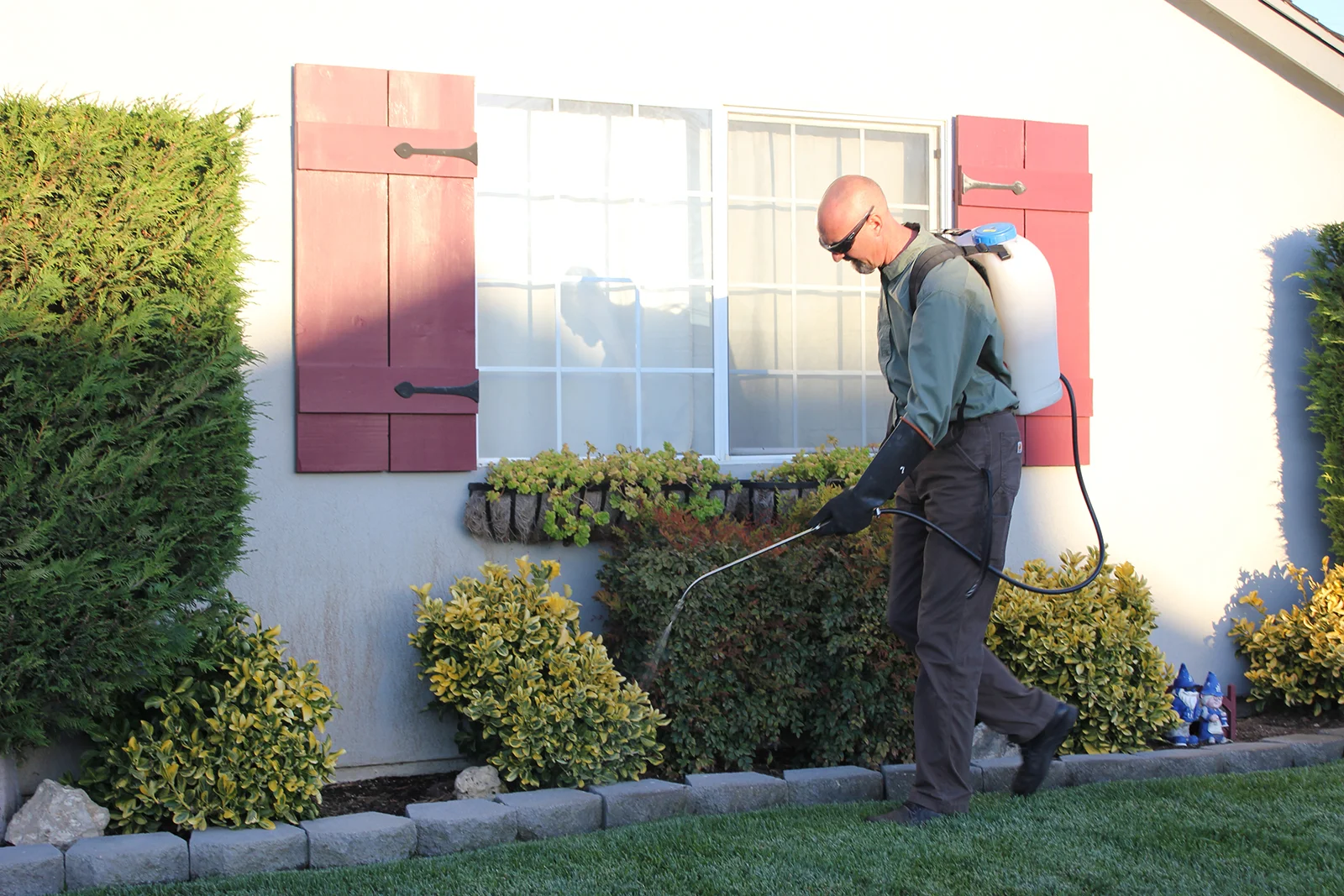Educational facilities face unique pest management challenges that require
specialized expertise in creating safe, healthy learning environments.
Schools serve hundreds or thousands of students daily while maintaining
complex facilities including classrooms, cafeterias, gymnasiums, and outdoor
areas that can attract various pest species. Effective school district
pest control must balance comprehensive pest elimination with strict
safety requirements, regulatory compliance, and minimal disruption to
educational activities and student learning.
From food service areas that attract rodents and cockroaches to playground
equipment that harbors spiders and wasps, educational facility pest management
requires understanding how school environments create pest opportunities
and implementing prevention strategies that protect student health without
compromising educational quality. Professional school pest control services
provide the expertise needed to maintain pest-free schools while meeting
health department requirements, ensuring regulatory compliance, and supporting
the safe, productive learning environments that students and educators deserve.
Protecting your school community? Our specialized team offers
child-safe school pest solutions
SAFE and comprehensive
educational facility pest management programs designed for learning environments.
Secure your schools today!
Unique Pest Control Challenges in Educational Facilities
School districts face distinctive pest management challenges that require
specialized approaches different from residential or typical commercial
pest control. Understanding these unique factors helps administrators
develop effective school district pest control strategies that
protect student health while maintaining educational continuity:
-
Child safety and health requirements Schools must use pest control
methods that pose no risk to children, who are more sensitive to chemical
exposures and may have allergies or respiratory conditions. All treatments
must meet strict safety standards while still providing effective pest
elimination and prevention.
-
High-traffic, multi-use facilities Schools combine food service,
educational spaces, recreational areas, and sometimes residential facilities
in complex buildings that create diverse pest attraction points and
require coordinated management approaches across different facility types.
-
Seasonal occupancy and intensive use periods Schools experience
dramatic usage changes between active school periods and summer breaks,
creating different pest management needs during occupied and vacant periods
that require flexible, adaptive treatment strategies.
-
Food service and cafeteria operations School kitchens and dining
areas must maintain strict health code compliance while serving hundreds
or thousands of meals daily, creating significant pest attraction that
requires commercial-grade food service pest management within educational settings.
-
Regulatory compliance and documentation School districts must comply
with federal, state, and local regulations governing pest control in
educational facilities, including detailed record-keeping, safety protocols,
and reporting requirements that ensure accountability and transparency.
Professional educational facility pest management addresses these
complex challenges through Integrated Pest Management (IPM) approaches
that emphasize prevention, monitoring, and targeted treatments using the
safest methods available while maintaining comprehensive protection for
the entire school community.
Common Pests in Educational Facilities
School environments provide ideal conditions for various pest species
that can impact student health, food safety, and educational activities.
Understanding these common threats helps school administrators implement
effective prevention and treatment strategies:
Cockroaches in Food Service Areas
Professional food service pest management ensuring school cafeteria safety
School cafeterias and food service areas attract cockroaches through
food preparation, storage, and waste management activities. These
environments must maintain strict health code compliance while serving
large numbers of students daily. School cafeteria pest control
requires specialized approaches that eliminate cockroach populations
while ensuring food safety and meeting health department requirements.
Cockroach infestations in schools can spread disease, trigger asthma
and allergies, and create unsanitary conditions that violate health
codes. Professional management includes comprehensive treatment of
food service areas, elimination of harborage sites, and prevention
strategies that maintain pest-free conditions during intensive daily
food service operations.
Rodents Throughout Facility Areas
Comprehensive rodent management protecting school facilities and students
Mice and rats in schools create serious health and safety concerns
through disease transmission, property damage, and contamination of
food and educational materials. School facilities often provide
numerous entry points, food sources, and nesting opportunities that
can support rodent populations if not properly managed through
school rodent control programs.
Effective rodent management requires comprehensive exclusion work,
elimination of food sources, and strategic placement of monitoring
and control devices in areas where children cannot access them.
School-specific rodent control emphasizes prevention and non-toxic
methods while ensuring rapid elimination of any infestations that
could impact student health or educational activities.
Ants and Outdoor Pest Issues
Safe outdoor pest management for school playgrounds and recreational areas
School playgrounds, athletic fields, and outdoor dining areas can
harbor ant colonies that create stinging hazards for students during
outdoor activities. Fire ants pose particular risks in southern
regions, while other ant species can invade buildings and contaminate
food areas. School outdoor pest management requires careful
balance between effective control and child safety.
Playground pest management emphasizes prevention through landscape
modification, targeted treatments of colony locations away from
student activity areas, and monitoring programs that detect new
infestations before they become hazardous. All outdoor treatments
use child-safe methods and timing that minimizes student exposure
while maintaining effective pest control.
Flying Insects and Wasps
Wasps, bees, and other flying insects around schools can create serious
safety concerns, particularly for students with allergies. Outdoor dining
areas, garbage collection points, and building eaves often attract flying
insects that can become aggressive during certain seasons or when nests
are disturbed by normal school activities.
School flying insect management includes regular monitoring for
nest development, safe removal of established nests, and prevention
strategies that reduce attraction to school grounds. Emergency response
protocols ensure rapid addressing of wasp or bee issues that could threaten
student safety during outdoor activities or events.
Stored Product Pests in Kitchens
School food service operations store large quantities of dry goods,
grains, and other food products that can attract stored product pests
including beetles, moths, and weevils. These pests can contaminate food
supplies and create health code violations that disrupt meal service
for hundreds or thousands of students.
Comprehensive stored product pest management includes inspection of
incoming food shipments, proper storage protocols, and treatment strategies
that eliminate infestations without contaminating food or creating safety
concerns in food preparation areas. Regular monitoring ensures early
detection and rapid response to prevent widespread contamination.
Spiders and Arachnids
While most spiders are beneficial for controlling other insects, certain
species can create safety concerns in schools, particularly around
playground equipment, storage areas, and outdoor facilities where students
might encounter them during normal activities. Venomous species require
immediate attention and professional management.
School spider management balances the beneficial aspects of most spider
species with the need to eliminate dangerous species and reduce spider
populations in high-student-contact areas. Targeted approaches address
problematic species while preserving beneficial spiders that help control
other pest insects naturally.
Child-Safe Integrated Pest Management
Schools require pest management approaches that prioritize child
safety above all other considerations while still providing effective
pest control. Child-safe IPM programs emphasize prevention,
monitoring, and targeted treatments using the least toxic methods
available, ensuring that pest control activities never compromise
student health or educational activities.
Integrated Pest Management in schools focuses on eliminating conditions
that support pest populations rather than relying primarily on pesticide
applications. This approach often proves more effective long-term
while providing the highest safety standards for children who spend
many hours daily in educational facilities.
Prevention-First Strategies
The most effective and safest pest control for schools emphasizes prevention
strategies that eliminate pest attraction and entry opportunities. School
pest prevention includes sanitation protocols, exclusion work, moisture
control, and habitat modification that address root causes of pest problems
rather than treating symptoms after infestations develop.
Prevention strategies work continuously to maintain pest-free conditions
without requiring regular chemical applications that could impact indoor
air quality or student health. These approaches often provide superior
long-term results while supporting the healthy learning environments
that students need for academic success.
Non-Toxic Treatment Methods
When treatments are necessary, schools benefit from non-toxic methods
including physical exclusion, mechanical traps, biological controls,
and other approaches that eliminate pests without chemical exposures.
Non-toxic school pest control provides effective results while
maintaining the highest safety standards for children and staff.
Modern pest control technology offers numerous non-toxic alternatives
that can be highly effective in school environments. Heat treatments,
vacuum removal, exclusion materials, and biological controls often
provide superior results compared to traditional chemical approaches
while eliminating any safety concerns for children.
Minimal-Risk Product Applications
When chemical treatments are necessary, schools use only EPA-approved
minimal-risk products that pose no threat to children when applied according
to label directions. Minimal-risk pest control includes products
made from food-grade ingredients, essential oils, and other materials
that provide effective pest control without health concerns.
All chemical applications in schools follow strict protocols regarding
timing, notification, and area access that ensure students and staff
are never exposed to treatment materials. Professional application and
detailed documentation ensure compliance with all safety requirements
and regulatory standards.
Ready to protect your school community with the safest methods available?
Our specialized school district pest control programs provide
comprehensive protection using child-safe IPM approaches that ensure
healthy learning environments – secure your schools today!
Regulatory Compliance and Documentation
Federal and State Requirements
Professional compliance support ensuring schools meet all regulatory requirements
School districts must comply with complex federal, state, and local
regulations governing pest control in educational facilities. School
pest control compliance includes adherence to EPA guidelines,
state education department requirements, health department codes,
and local regulations that govern pesticide use around children
and in educational settings.
Professional school pest control providers understand these regulatory
requirements and ensure that all pest management activities meet
or exceed compliance standards. Comprehensive documentation supports
regulatory inspections and demonstrates district commitment to student
health and safety through responsible pest management practices.
Health Department Coordination
School food service areas must maintain health department compliance
that includes specific pest control requirements for commercial kitchens
and food preparation areas. Health department compliance requires
regular inspections, documented pest management activities, and immediate
response to any pest issues that could impact food safety or health scores.
Professional coordination with health department inspectors ensures that
school pest management programs meet all food service requirements while
maintaining the child-safe approaches necessary in educational environments.
Regular communication and documentation support positive health department
relationships and inspection results.
Documentation and Reporting
School districts require detailed documentation of all pest control
activities including inspection reports, treatment records, product
usage, and effectiveness monitoring that support regulatory compliance
and demonstrate responsible stewardship of student health and safety.
School pest control documentation provides accountability and
transparency that builds community confidence.
Comprehensive record-keeping supports budget planning, regulatory inspections,
and continuous improvement of pest management programs. Digital documentation
systems provide easy access to historical data and trend analysis that
helps school administrators make informed decisions about pest management
investments and program modifications.
Facility-Specific Pest Management
Classroom and Administrative Areas
Safe pest management maintaining healthy classroom learning environments
Classrooms require pest management that maintains healthy learning
environments without disrupting educational activities or creating
safety concerns for students and teachers. Classroom pest management
emphasizes prevention through proper sanitation, exclusion, and
monitoring that maintains pest-free conditions with minimal intervention.
Administrative areas often house important documents and equipment
that require protection from pest damage while maintaining professional
environments for staff and visitors. Integrated approaches address
both current pest issues and long-term prevention that supports
productive educational administration.
Food Service and Kitchen Operations
School kitchens and cafeterias require commercial-grade pest management
that maintains health code compliance while serving hundreds or thousands
of meals daily. School food service pest control includes comprehensive
treatment of food preparation areas, storage zones, and dining spaces
that eliminate pest attraction and harborage opportunities.
Food service pest management coordinates with kitchen operations to
minimize disruption while ensuring continuous protection during meal
preparation and service periods. Specialized approaches address the
unique challenges of maintaining pest-free conditions in high-volume
food operations within educational settings.
Gymnasiums and Athletic Facilities
Gymnasiums, locker rooms, and athletic facilities create unique pest
management challenges through moisture, equipment storage, and high
student usage that can attract various pest species. Athletic facility
pest management addresses these challenges while maintaining safe,
healthy environments for physical education and sports activities.
Moisture control, equipment protection, and regular monitoring ensure
that athletic facilities remain pest-free while supporting active student
participation in sports and physical education programs. Specialized
treatments address locker room environments and equipment storage areas
that can harbor pests if not properly managed.
Libraries and Computer Labs
Libraries and computer labs house valuable books, equipment, and technology
that require protection from pest damage while maintaining quiet, productive
learning environments. Educational technology pest protection
prevents damage to expensive equipment while preserving library materials
and supporting student academic activities.
Specialized approaches for library and computer lab pest management
address stored product pests that can damage books and paper materials,
while also protecting electronic equipment from pest-related damage
or contamination. Prevention strategies minimize pest attraction while
maintaining optimal learning environments.
Seasonal School Pest Management
Spring Semester
- Post-winter facility inspections
- Outdoor area pest prevention
- Flying insect monitoring
- Landscape pest management
Focus: Prepare facilities for active outdoor season
and address any pest issues that developed during winter months.
Summer Break
- Intensive facility treatments
- Deep cleaning coordination
- Infrastructure improvements
- Fall preparation planning
Focus: Utilize reduced occupancy for comprehensive
treatments and facility improvements that support year-round pest prevention.
Fall Semester
- Back-to-school facility preparation
- Rodent exclusion focus
- Food service area intensification
- Cold weather preparation
Focus: Ensure pest-free conditions for new school year
and prevent pest entry as temperatures drop.
Winter Semester
- Indoor environment monitoring
- Heating system pest checks
- Food storage protection
- Spring planning activities
Focus: Maintain pest control in heated indoor environments
and prepare for spring pest emergence.
Emergency Pest Response for Schools
Schools occasionally face pest emergencies that require immediate
attention to protect student safety and maintain educational continuity.
School emergency pest response provides rapid deployment for
situations like wasp swarms near playgrounds, sudden rodent infestations
in food service areas, or pest discoveries that could impact health
department inspections or school operations.
Emergency protocols include 24/7 availability for critical situations,
immediate assessment and containment of pest issues, and rapid
implementation of child-safe solutions that address problems without
compromising student safety or requiring facility closures that
would disrupt educational activities.
Rapid Response Protocols
School pest emergencies require immediate professional response that
addresses safety concerns while minimizing disruption to educational
activities. Rapid pest response includes same-day service for
critical issues, immediate safety assessments, and temporary containment
measures that protect students while comprehensive solutions are implemented.
Emergency response protocols coordinate with school administrators,
maintenance staff, and health officials to ensure that pest issues
are addressed quickly and effectively without compromising student
safety or educational quality. Clear communication keeps all stakeholders
informed throughout the emergency response process.
Health Department Emergency Coordination
Pest emergencies in school food service areas may require immediate
coordination with health department officials to address food safety
concerns and maintain compliance during crisis situations. Health
emergency pest response provides expert support that helps schools
navigate regulatory requirements while solving pest problems quickly.
Professional emergency response includes documentation and reporting
that supports health department coordination and demonstrates appropriate
response to pest-related food safety concerns. Rapid professional
intervention often prevents minor issues from becoming major health
code violations or facility closures.
Communication and Transparency
School pest emergencies require clear communication with parents, staff,
and community members that maintains transparency while preventing
unnecessary alarm. Emergency communication protocols provide
factual information about pest issues and response measures while
demonstrating professional management and commitment to student safety.
Professional emergency response includes communication support that
helps school administrators provide appropriate information to stakeholders.
Clear, factual communication often prevents minor pest issues from
becoming major community relations challenges while building confidence
in school management and safety protocols.
Budget Planning and Cost Management
School districts must balance effective pest control with budget constraints
while ensuring compliance with safety and regulatory requirements. School
pest control budgeting requires understanding the total cost of
comprehensive programs versus the risks and expenses associated with
reactive treatments and emergency responses.
| Budget Factor |
Preventive Program Benefits |
Reactive Treatment Costs |
| Annual Service Costs |
Predictable monthly costs; comprehensive coverage;
economies of scale for multiple facilities; preventive focus.
|
Unpredictable emergency costs; higher per-incident pricing;
limited coverage; crisis-driven scheduling.
|
| Regulatory Compliance |
Consistent documentation; proactive compliance; reduced
inspection risks; professional support for requirements.
|
Emergency compliance efforts; potential violations;
reactive documentation; limited regulatory support.
|
| Educational Disruption |
Minimal disruption; scheduled service; coordinated timing;
preventive approach reduces crisis situations.
|
Potential facility closures; emergency scheduling;
educational disruption; crisis management requirements.
|
| Health and Safety |
Consistent protection; professional monitoring; early
detection; comprehensive prevention strategies.
|
Variable protection; delayed response; potential health
risks; limited prevention focus.
|
Investment Analysis
Comprehensive school pest management programs typically cost 60-80%
less than reactive approaches while providing superior protection,
regulatory compliance, and educational continuity that supports
student success and district reputation.
School District Success Stories
"PestControl100's IPM program transformed our district's approach
to pest management. We went from reactive emergency calls to
proactive prevention that keeps our 15 schools pest-free year-round.
The child-safe methods give parents confidence and our health
department inspections are consistently excellent."
- Dr. Maria Rodriguez, Facilities Director, Riverside School District
★★★★★
"The comprehensive program eliminated our recurring cockroach problems
in the cafeteria while maintaining full health code compliance.
The professional service and detailed documentation made our last
health inspection the smoothest we've ever experienced."
- James T., Food Service Director, Mountain View Elementary
★★★★★
"As a principal, I appreciate how PestControl100 coordinates around
our educational schedule and uses only child-safe methods. The
prevention focus means we rarely deal with pest disruptions, and
our teachers and parents have complete confidence in the safety
of our learning environment."
- Sarah K., Principal, Lincoln Middle School
★★★★★
Frequently Asked Questions
How do you ensure pest control methods are safe for children?
We use Integrated Pest Management (IPM) approaches that prioritize
prevention and non-toxic methods. When treatments are necessary, we
use only EPA-approved minimal-risk products made from food-grade
ingredients and essential oils. All applications follow strict protocols
for timing, notification, and area access that ensure children are
never exposed to treatment materials. Our methods meet or exceed all
federal and state safety requirements for educational facilities.
How do you coordinate with school schedules and activities?
We work closely with school administrators to schedule all pest control
activities around educational schedules, events, and facility usage.
Most routine services occur during after-school hours, weekends, or
school breaks. We maintain detailed school calendars and coordinate
with custodial staff to ensure minimal disruption. Emergency services
are available 24/7 for urgent situations that could impact student
safety or school operations.
What documentation do you provide for regulatory compliance?
We provide comprehensive documentation including detailed service
records, inspection reports, treatment logs, product usage records,
and effectiveness monitoring that meets all federal, state, and local
regulatory requirements. Our digital documentation systems provide
easy access for health department inspections, regulatory audits,
and internal reporting needs. All records demonstrate compliance
with EPA guidelines and state education department requirements.
How do you handle pest emergencies that occur during school hours?
We provide 24/7 emergency response for critical pest issues that
could impact student safety. Our emergency protocols include immediate
assessment, rapid containment using child-safe methods, and coordination
with school administrators to minimize educational disruption. We
maintain emergency response equipment and certified technicians ready
for same-day deployment to address urgent situations like wasp swarms
or food service pest discoveries.
Staff Training and Educational Programs
Effective school pest management requires educated staff who understand
their role in prevention and early detection. School staff pest
education provides custodial staff, food service workers, and
administrators with the knowledge needed to support comprehensive
pest management programs while maintaining the highest safety standards
for students and educational activities.
Training programs cover pest identification, prevention strategies,
early detection techniques, and proper reporting protocols that
help school staff contribute to pest-free learning environments.
Well-trained staff often identify and address pest issues before
they become significant problems requiring intensive intervention.
Custodial Staff Training
Custodial staff play a crucial role in school pest prevention through
daily cleaning, maintenance, and monitoring activities. Custodial
pest prevention training covers sanitation protocols, facility
maintenance practices, and pest identification that help maintain
pest-free conditions through routine daily activities.
Training includes proper waste management, moisture control, facility
inspection techniques, and communication protocols that ensure pest
issues are identified and reported quickly. Educated custodial staff
become valuable partners in comprehensive school pest management programs.
Food Service Worker Education
School food service workers require specialized training in pest prevention
techniques specific to commercial kitchen and food preparation environments.
Food service pest prevention training covers sanitation requirements,
storage protocols, and early detection methods that maintain health
code compliance while supporting comprehensive pest management.
Training addresses specific challenges of high-volume food service
operations in educational settings, including proper cleaning procedures,
storage management, and waste handling that prevents pest attraction
and harborage in food preparation areas.
Administrator Education Programs
School administrators need understanding of pest management requirements,
regulatory compliance, and budget considerations that support effective
decision-making about district pest control programs. Administrator
pest management education provides the knowledge needed to evaluate
programs, ensure compliance, and communicate effectively with stakeholders.
Education programs cover regulatory requirements, safety protocols,
budget planning, and communication strategies that help administrators
support effective pest management while maintaining community confidence
and regulatory compliance.
Advanced Technology for School Pest Management
Modern schools can benefit from advanced pest management technologies
that provide enhanced monitoring, documentation, and treatment capabilities
while maintaining the highest safety standards for children. School
pest management technology enhances program effectiveness while
supporting transparency and accountability that builds community confidence.
Digital Monitoring Systems
Advanced monitoring technology providing safe, comprehensive school pest surveillance
Digital monitoring systems can provide continuous surveillance of
school facilities while remaining completely safe and unobtrusive
to students and educational activities. Smart school pest monitoring
enables early detection of pest activity before problems impact
students or require disruptive treatments to address established
infestations.
Automated monitoring provides real-time alerts that enable rapid
response to emerging pest issues. These systems often detect problems
weeks or months before traditional inspection methods, allowing
for preventive interventions that maintain pest-free conditions
with minimal disruption to educational activities.
Digital Documentation Platforms
Comprehensive digital documentation systems support regulatory compliance,
budget planning, and program optimization while providing transparency
that builds stakeholder confidence. Digital school pest documentation
provides easy access to service records, compliance reports, and program
effectiveness data that support informed decision-making.
Digital platforms enable real-time communication between pest management
providers, school administrators, and district officials. Automated
reporting ensures that all stakeholders have access to current information
about pest management activities and program effectiveness.
Mobile Communication Systems
Mobile applications and communication platforms enable immediate reporting
of pest issues and real-time coordination between school staff and
pest management professionals. Mobile school pest communication
ensures rapid response to emerging issues while maintaining detailed
records of all communications and responses.
Mobile systems provide school staff with easy tools for reporting pest
sightings, requesting services, and accessing pest prevention information.
These tools often improve program effectiveness by enabling faster
response to issues and better communication between all program participants.
Community Engagement and Communication
Effective school pest management requires community support and understanding
that builds confidence in school safety and environmental stewardship.
School pest management communication provides transparency about
pest control activities while educating stakeholders about the importance
of comprehensive pest prevention in educational environments.
Parent and Community Education
Community education building confidence in school pest management programs
Parents and community members need understanding of school pest
management programs that builds confidence in student safety and
environmental responsibility. Parent pest education programs
provide information about IPM approaches, safety protocols, and
the importance of comprehensive pest prevention in maintaining
healthy learning environments.
Educational programs address common concerns about pest control
in schools while demonstrating the district's commitment to student
health and safety. Transparent communication often converts skeptics
into supporters who appreciate professional pest management as
an essential component of school safety and maintenance.
Stakeholder Communication
School boards, administrators, teachers, and community leaders need
regular communication about pest management program effectiveness,
safety protocols, and regulatory compliance. Stakeholder pest management
communication provides the information needed to support program
funding and community confidence in school operations.
Regular reporting to stakeholders includes program effectiveness metrics,
safety documentation, cost-benefit analysis, and regulatory compliance
status that demonstrates responsible stewardship of community resources
and student health. Transparent communication builds trust and support
for comprehensive pest management programs.
Media and Public Relations
Schools occasionally face media attention regarding pest issues or
pest control activities that require professional communication support.
School pest management public relations provides factual information
and expert perspective that maintains community confidence while addressing
any concerns about pest control in educational environments.
Professional communication support helps school districts respond
appropriately to media inquiries while demonstrating transparency,
responsibility, and commitment to student health and safety. Proactive
communication often prevents minor issues from becoming major public
relations challenges.
Long-term Pest Management Planning
Successful school pest management requires long-term planning that
anticipates changing needs, facility aging, and evolving pest pressures.
Long-term school pest planning provides strategic guidance that
supports effective budget allocation, facility maintenance planning,
and program optimization over multiple years.
| Planning Timeframe |
Key Considerations |
Strategic Actions |
| Annual Planning |
Budget allocation; seasonal program adjustments;
facility maintenance coordination; staff training needs.
|
Comprehensive facility assessments; program effectiveness reviews;
budget planning; staff education updates; regulatory compliance audits.
|
| 3-5 Year Planning |
Facility renovations; program technology upgrades;
changing regulations; demographic changes; climate considerations.
|
Infrastructure improvement planning; technology integration;
program expansion; facility modification coordination.
|
| Long-term Planning |
Major facility construction; district expansion;
environmental changes; regulatory evolution; community growth.
|
New construction pest prevention; district-wide standardization;
environmental adaptation; future-proofing investments.
|
Strategic Investment
Long-term pest management planning helps school districts optimize
resource allocation, prevent costly emergency situations, and maintain
consistent pest-free learning environments that support student
success and community confidence.
Ready to provide the safest, most effective pest management for your
school district? Our comprehensive educational facility pest management
programs use child-safe IPM approaches that ensure healthy learning
environments while meeting all regulatory requirements. From emergency
response to long-term planning – protect your students today!
Educational Facilities We Serve
Our specialized school district pest management services serve all
types of educational facilities throughout the United States. We
understand the unique challenges of different educational environments:
Public School Districts
Large public school districts require comprehensive, cost-effective
pest management that meets strict safety and regulatory requirements
across multiple facilities. Our district-wide programs provide
economies of scale while ensuring consistent protection and compliance
across all schools and administrative buildings.
Private Schools
Private schools often have unique requirements including historic
buildings, premium service expectations, and diverse facility types.
Our private school programs provide customized solutions that respect
institutional character while ensuring superior pest control and
safety standards.
Preschools & Daycares
Early childhood facilities require the highest safety standards and
most careful pest management approaches. Our preschool programs use
exclusively non-toxic methods while providing comprehensive protection
for the youngest, most vulnerable members of our communities.
Nationwide School District Service Coverage
Serving school districts and educational facilities across America with child-safe pest management expertise

